“Enright, stop writing me letters! I’m sitting right over here for Pete’s sake!”
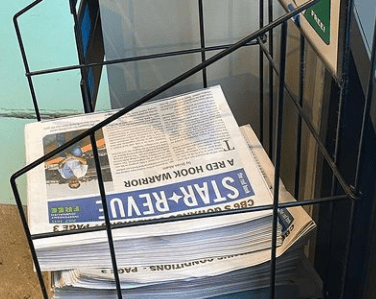
Uh, oh, it was editor-publisher George again. I put down my pen and started clacking away on the keyboard.
“And don’t email me any letters, either!” he yelled, pointing his cigar at me. “I need some history from you, not opinions!”
Jeeze, alright. Queue some history music, maestro, if you please, a story about the origin of a railroad that’s a sleepy freight line now, but soon may be busting its Brooklyn britches.
On Monday, March 19, 1877, over 200 Italian immigrant laborers were laying tracks amidst the chilly woods of Flatbush, just yards beyond the southern boundary of the Village of Parkville, formed by a dirt trail called Foster Avenue. Some of their crew had been left a quarter of a mile behind to dig a tunnel under the recently completed Ocean Parkway, but their eventual destination would be a ferry landing four miles west in Bay Ridge.
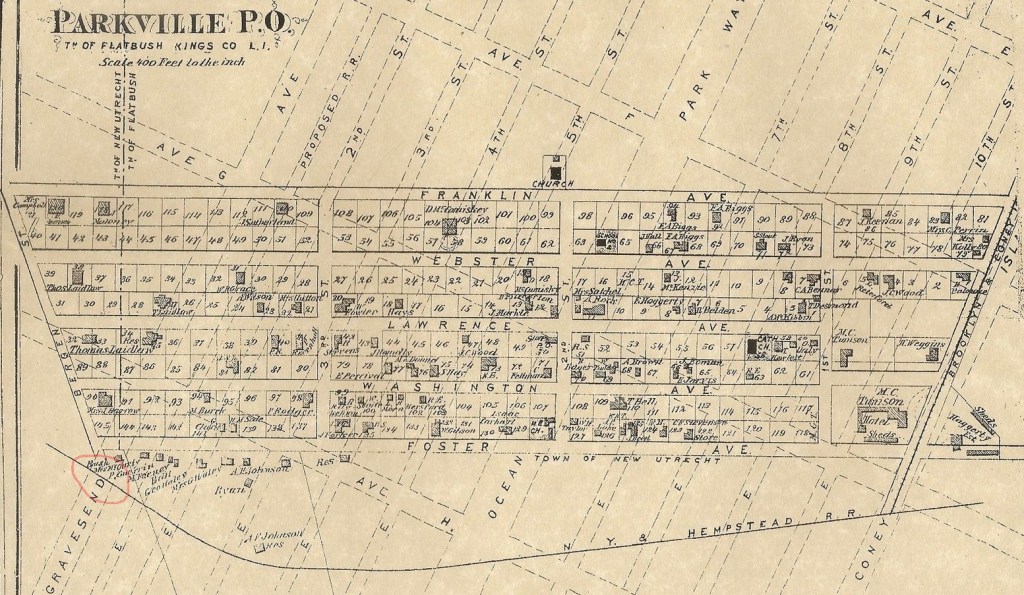

But up ahead, the crew’s foreman could see dozens of men loitering around a station house near the tracks of another railroad, running north-to-south along Gravesend (now McDonald) Avenue. And on those rails, he saw a 28-ton locomotive suddenly approach and park itself directly in his path. Within hours all hell broke loose, and therein lies our tale.
Two years earlier, a Brooklyn entrepreneur, Andrew R. Culver, laid those Gravesend Avenue tracks for a railroad originating at 20th Street and 9th Avenue (today’s Prospect Park West), then the sparsely populated southern border of the City of Brooklyn. Why locate a terminal there, when all your customers lived well north of it? Because noisy, sooty, steam-belching railroad locomotives had been banned from operating within the City of Brooklyn since 1861. But after Prospect Park was completed in 1873, Brooklynites began venturing southward, down-slope into the rural hinterlands of Kings County beyond the Park: to Flatbush, New Utrecht, Gravesend and most importantly, Coney Island.
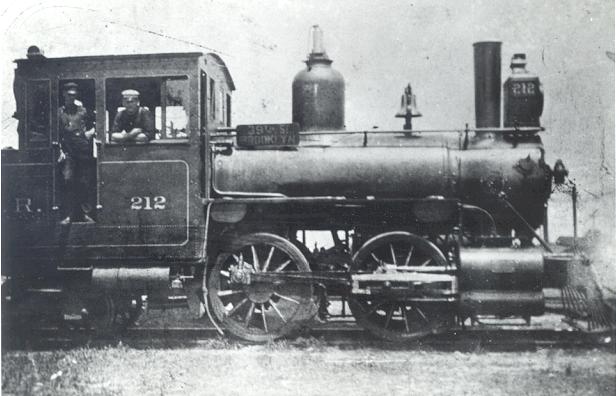
To serve those travelers who couldn’t ride a horse or carriage five miles along Ocean Parkway, steam railroads sprang up along the City’s border. Yes, bankers in Brooklyn Heights and the hoi polloi in Red Hook would need to take horse-drawn rail cars to reach those belching behemoths – electrified trolleys wouldn’t arrive until the 1890s – but from the City line to the shore took a scant 25 minutes. And Culver’s new year-round 35-cents railroad was an immediate success. Descending from the glacial moraine alongside Green-Wood Cemetery, it ran down the middle of Gravesend Avenue straight to the water, where he built a huge terminal for steam locomotives that would eventually become the home for the electrified Culver (F), Sea Beach (N), West End (D) and Brighton (Q) subway lines.
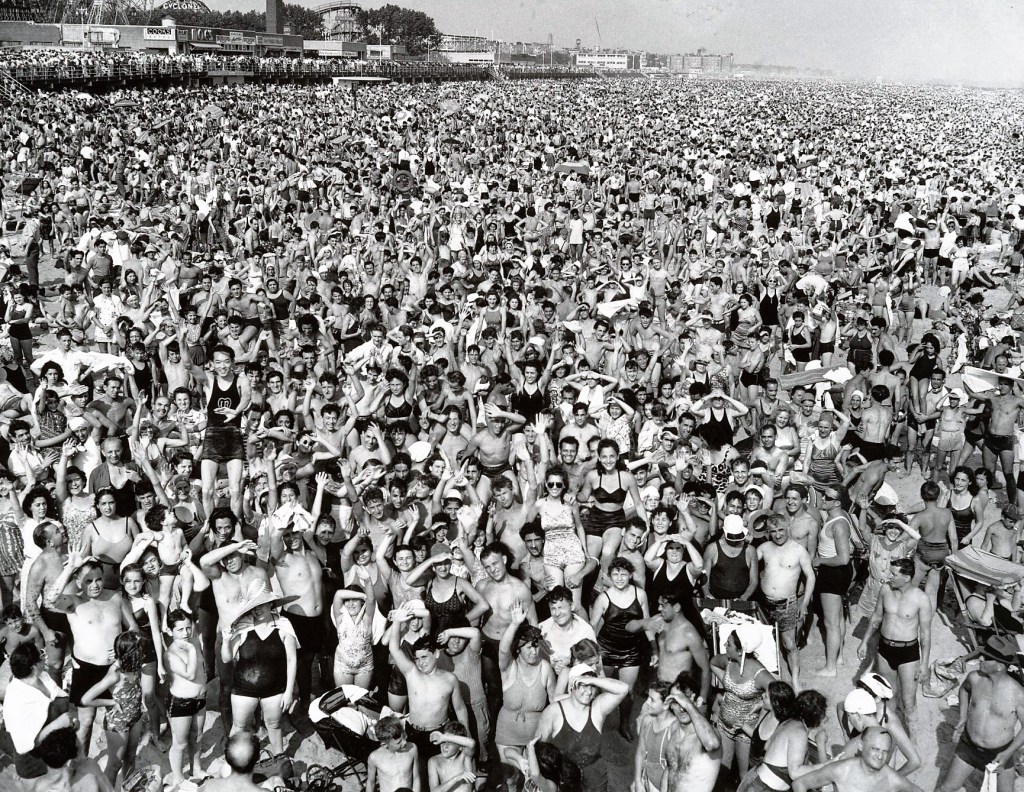
Back to 1877. That crew chopping its way west was building the New York and Manhattan Beach Railway. They began laying tracks at a station in East New York, cutting through Canarsie, Flatlands, Flatbush Avenue, Ocean Avenue, and when the workers reached a point near the empty street-grid coordinates of East 16th Street and Avenue H, they paused to build spurs and switches. One gang then peeled off to lay tracks due south through an unpopulated stretch of private lands to an ocean-front hotel. The rest of the workers continued their westward advance through the woods toward Gravesend Avenue.
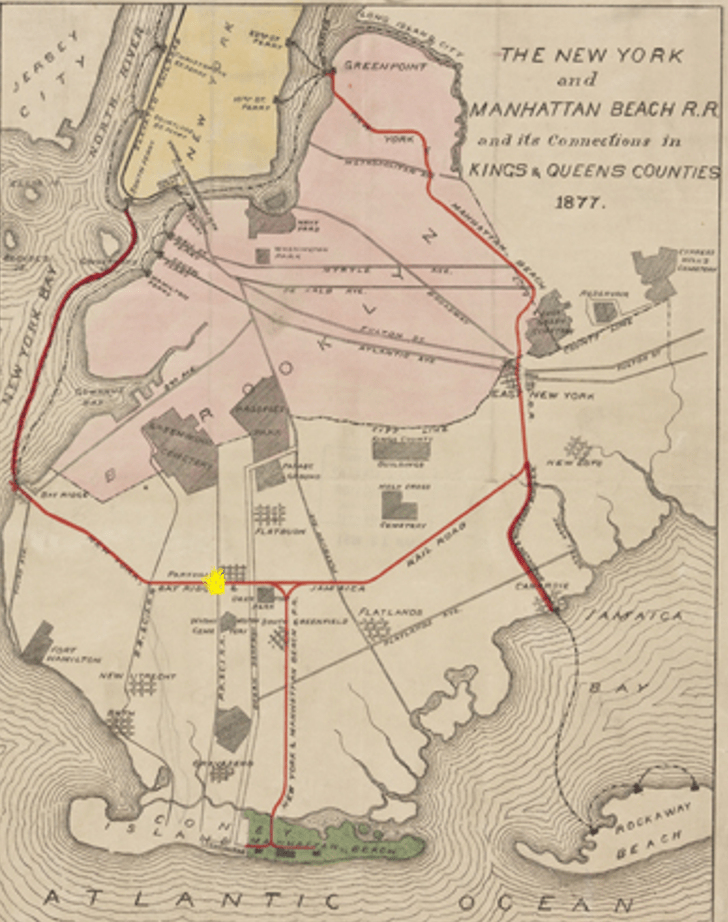

Austin Corbin, a Master of the Universe, created this railway to shepherd hordes of Manhattan ferry riders landing in Greenpoint, Long Island City and Bay Ridge to his new extravagant resort hotel on the eastern end of Coney Island. The railroad, the hotel, and the 500 acres of land surrounding it – which Corbin had recently stolen…er… acquired – were all dubbed “Manhattan Beach,” because let’s face it, what Gilded Age high roller would ever want to sunbathe on (UGH!) Brooklyn Beach. Corbin financed his bid to become a railroad tycoon by pioneering the securitization of bundled mortgages issued to Midwest farmers. Some of them sued him for usury but hey, that’s the price you pay to become a Master Scumbag.
Corbin had migrated from the Iowa bank he founded to the Big Apple where he partnered with J. P. Morgan. It helped that Corbin’s cousin was Salmon Chase, a former Governor, Senator, Secretary of the Treasury, and the sitting Chief Justice of the US Supreme Court in whose honor Chase Bank would later be named. But “honor” was a word never associated with Austin Corbin. Described by one contemporary railroad man as a human monster, “a hog-shark driven by greed to make war upon the weak,” Corbin was recently ranked by the New England Historical Society as “probably the most loathsome blight New Hampshire ever produced.” And not in a good way.
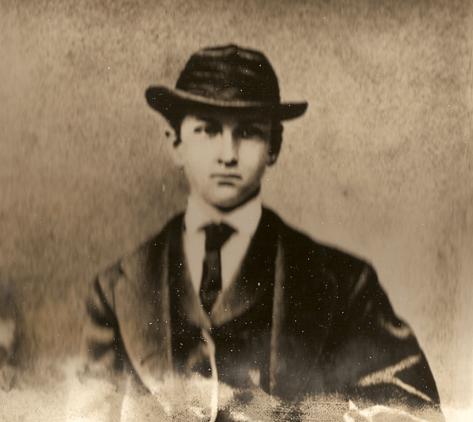
Andrew Culver on the other hand, a Long Island native and mere Master of the Solar System, was a Columbia Law grad and a successful attorney for 25 years before entering the rough-and-tumble world of Brooklyn railroading.
No vitriol about him can be found unless, of course, you happen to read the diaries of property owners along Gravesend Avenue after Culver appropriated the public thoroughfare without so much as a thank-you-very-much to build his locomotive’s path to Coney Island (law suits ensued, forcing him to pay meager reparations).
As morning dawned on that fateful March day one hundred and forty-five years ago, the temperature was just below freezing and would not get much above 40 degrees for the next week. Culver’s men, long anticipating the Corbin approach, gathered around their locomotive at the targeted intersection. Undaunted, the Corbin crew decided to tunnel under the train. As they did so, Culver’s men shoveled the excavated dirt back on top of them. Since it is easier to drop earth into a trench than to throw it back out, the tunnelers soon found themselves choking in dirt. Shovels and fists were brought to bear. More immigrant laborers were summoned from Ocean Parkway and the Bay Ridge ferry landing, but Culver countered with an Irish immigrant horde of his own. Bedlam ensued. Culver, realizing his Irish were outnumbered, called upon the local constabularies to restore order.
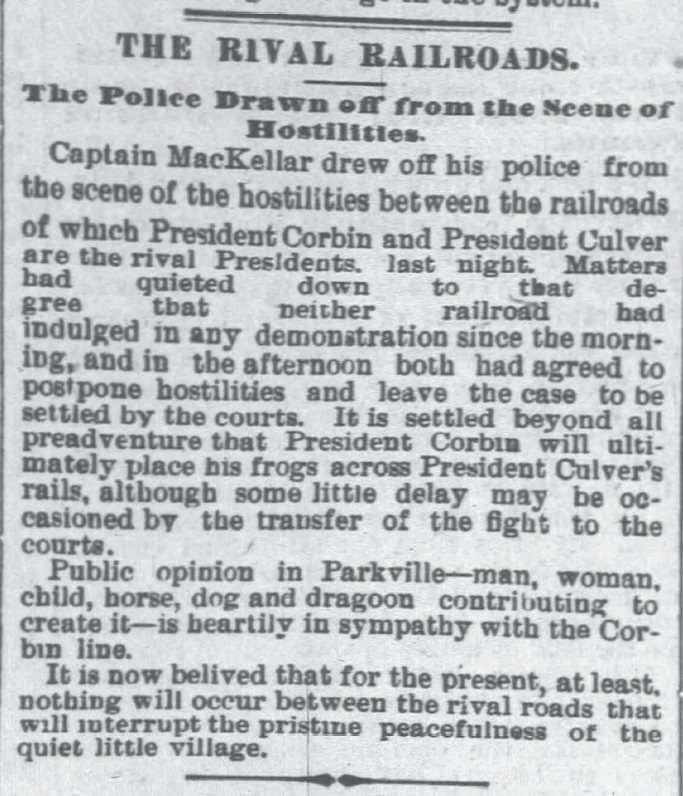
All of this commotion roused the residents of sleepy Parkville, a farming/horse-grooming community of about 400 souls. Fed up with Culver’s noisy trains, they cheered on Corbin’s combatants. Soon squadrons of police arrived to separate the laborers. The Italians retired to tents erected along the path they’d created, stretching from the combat zone back to Ocean Parkway. The Irish meanwhile bedded down in the Parkville station house, making way for train cars crawling in from Green-Wood into which the police would pile through the nights that followed.
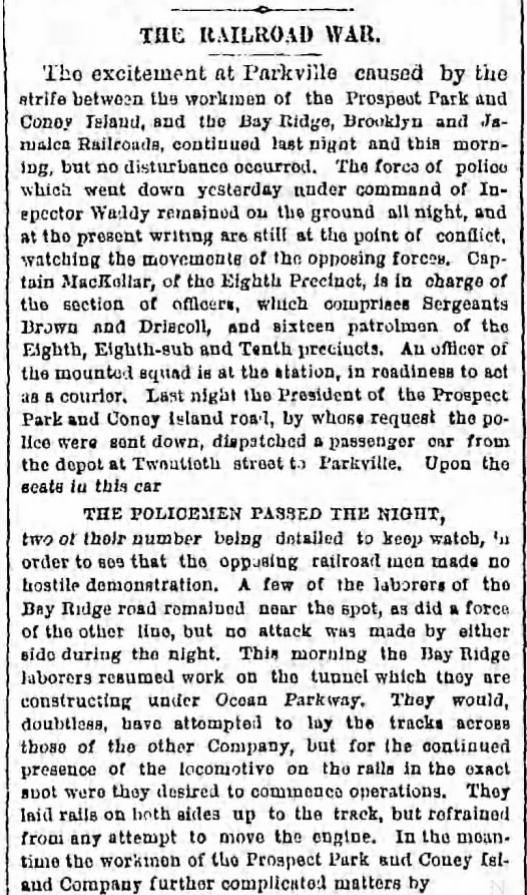
On March 21, the attorneys intervened. Law suits, injunctions, cease and desist orders all quickly ensued until the courts decided that Corbin had the right to cross the Culver line at grade. The two railways then worked out an agreement that Culver’s trains – a year-round operation versus Corbin’s summer-only excursions – would always have the right-of-way as long as they ran on a headway exceeding 15 minutes through what would henceforth be known as Parkville Junction.
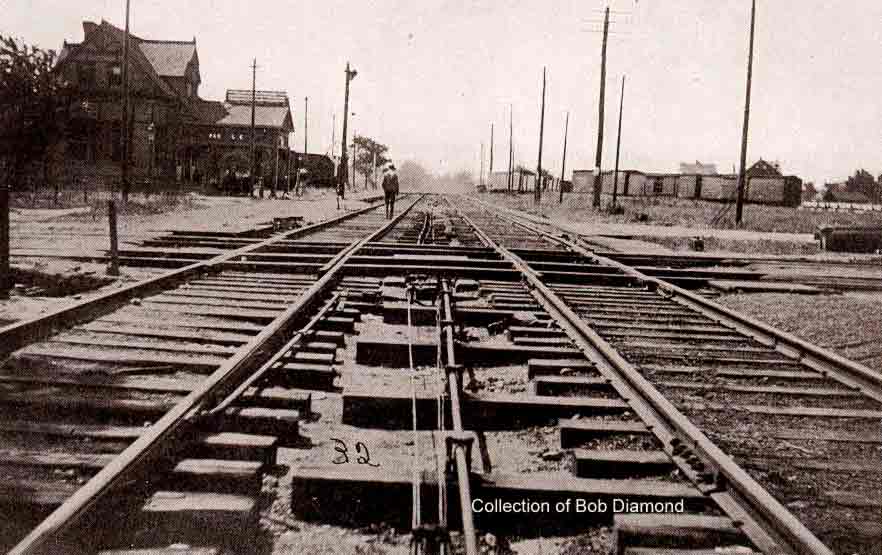
Alas and alack, Corbin scheduled more trains on Sunday July 29, 1877 without informing Culver and WHAM! The collision at Parkville injured scores of Culver passengers but the Manhattan Beach car that the Culver locomotive plowed through contained only a sleeping motorman. Police arrested the engineers of both trains as well as a flagman who was apparently also asleep at the switch. Thirty years later the Brooklyn Grade Crossing Elimination Commission forced Corbin’s railroad to tunnel under those Culver tracks. And seven years after that the Culver line became an elevated railroad, powered by a third rail.
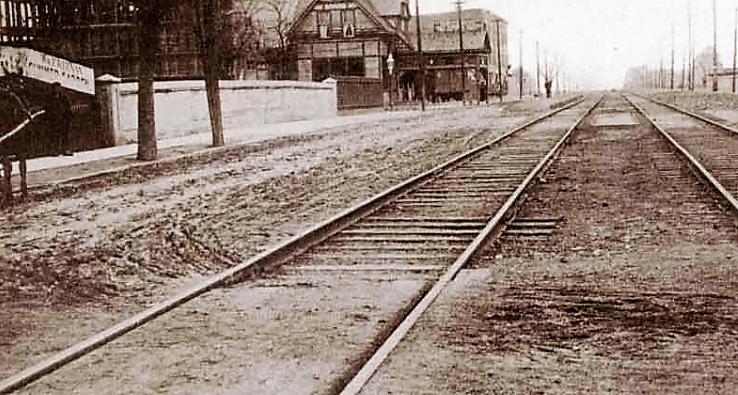
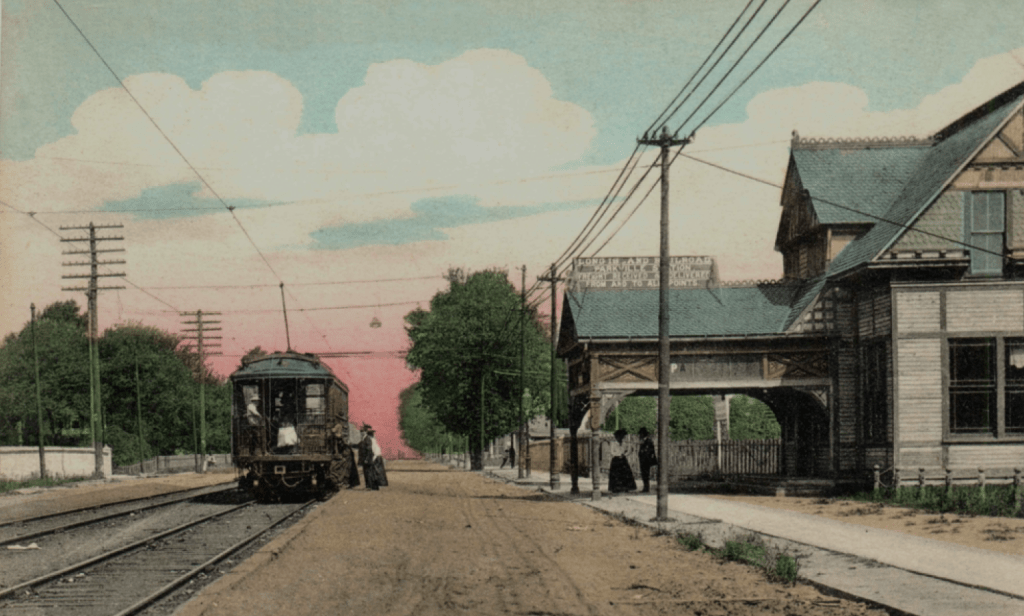
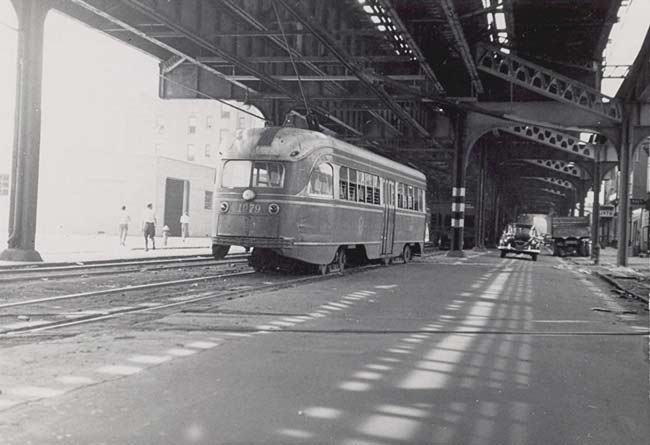
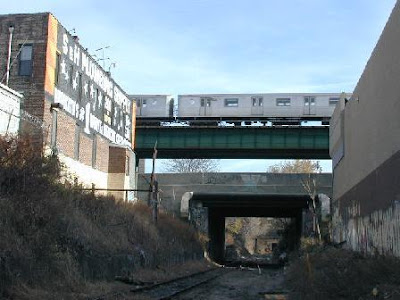
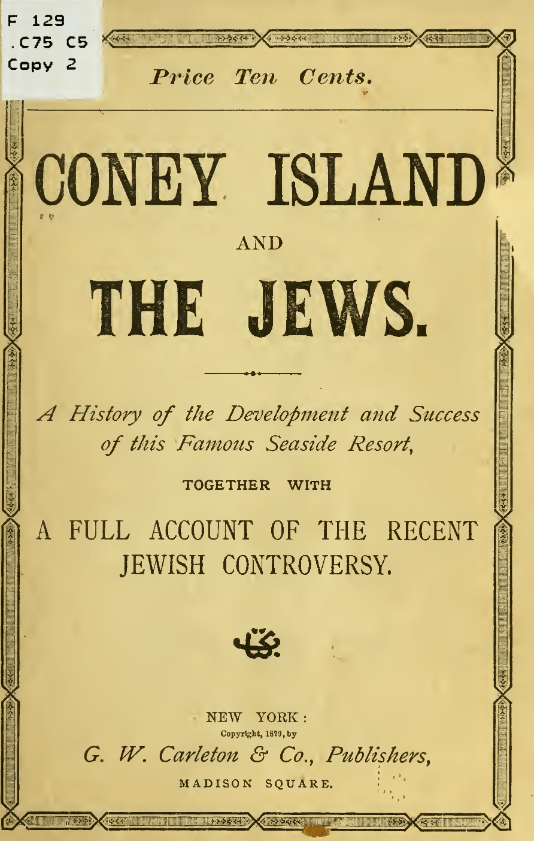
And what of the Corbin and Culver legacies? A notorious anti-Semite who publicly warned Jews not to enter his Manhattan Beach resort, Austin Corbin’s long and sordid history of corruption, swindling, bribery, and thuggery ended in 1896 when the horse drawing his carriage decided the 68-year-old tycoon had done enough damage for one lifetime: it shied, tipping over the open carriage and threw Corbin eight feet down an embankment against a stone wall near his Newport, New Hampshire mansion.
Perhaps anticipating New England’s eventual disapproval, his family buried him in Woodlawn Cemetery in the Bronx. And although Corbin Place marks the street where his railroad terminated for 40 years, today’s Manhattan Beach residents recently decided the name would henceforth commemorate Margaret Corbin, a heroic Revolutionary War combatant and the first female to be awarded a veteran’s pension.

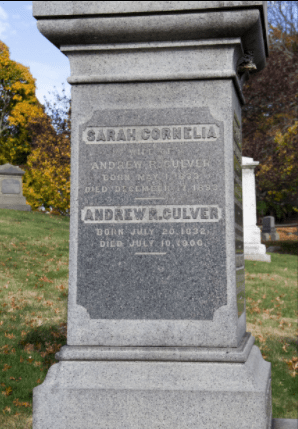
As for Andrew Culver, he lived in Brooklyn for 50 years but when his wife died and Corbin gobbled up his railroad in 1893, Culver moved to a Central Park West apartment and died peacefully in his sleep at the age of 73 without much notice. He’s buried in Green-Wood Cemetery. But his name survives in MTA descriptions of the F Train along McDonald Avenue, which is still called “the Culver Line” to this day.
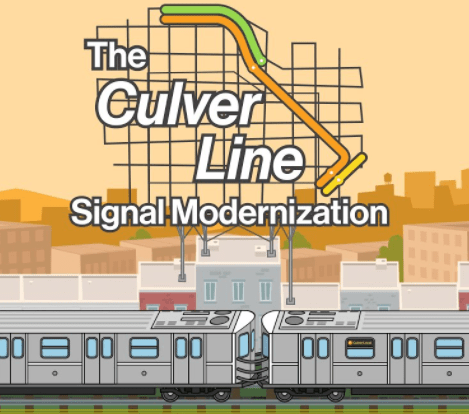
Still, Austin Corbin’s old railroad line is much in the news today, owing to the light-rail MTA Interborough Express proposed by Governor Kathy Hochul, and the freight-train Port Authority Cross Harbor Tunnel long championed by Representative Jerry Nadler. Each would utilize the same roadbed.
Uh-Oh.

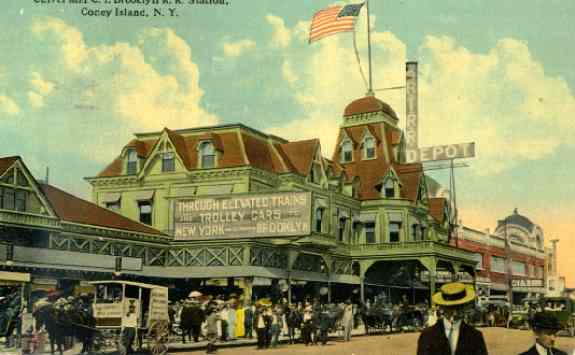
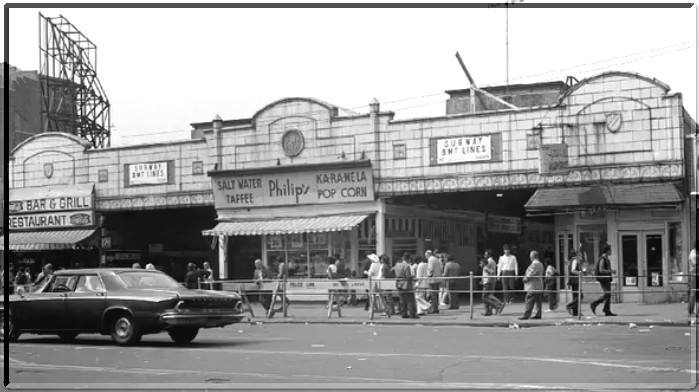
[AUTHOR’s NOTE: In the Summer of 1961, when it was called the Stillwell Avenue Arcade, I got my first job there. I was only thirteen, but I looked more like fourteen. My duties? Ward off crazy people from attacking my employer’s souvenir stand, wrestle stolen merchandise away from petty thieves, and warmly beckon subway riders to explore the cheap crap on display behind me. In short, it was the worst job imaginable that didn’t involve public toilets, made bearable only by the cash envelope thrown my way every week, the outside of which detailed all the deductions. Imagine my disappointment 50 years later when I downloaded a list of my year-by-year Social Security contributions and found for the year 1961: $0.00. 30% of my pay had been robbed! Damn you, statute of limitations!]

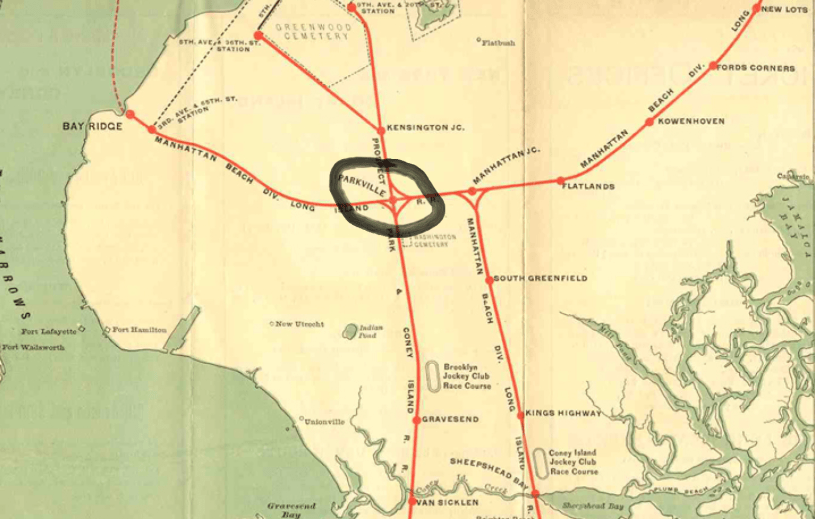
Interesting story of how rails would define the area.
LikeLike
Incredible research! There is a federal agency or two who could use your talents!
The photo of Coney Island beach circa 1940 sparked a remembrance of my dad, who liked to go. Only two years later he was drafted into the U.S. Army. I imagine your dad also entered the armed forces about the same time. No Nathan’s Hot Dogs until after WWII.
I’m not sure if I mentioned working as a Trackman on a Tie Gang- Penn Central Hudson Line. 1975 was a tough year for the “Big Apple”.
So, it was you and not Arnold Schwarzenegger knocking guys out on Stilwell!
Beaches, hotdogs, riding the trains, museums, parks et al. Did we really have it that good, growing up in Brooklyn 40’s, 50’s and 60’s?
LikeLike
I collect stock certificates and have a number from early Brooklyn rails. They’re historically interesting and often have wonderful graphics. I enjoyed this article!
LikeLike